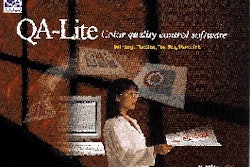OSHA's first move will be a proposal requiring companies to institute mandatory worker safety and health programs. That proposed rule, expected early this year, will be followed in the summer by a second proposed rule covering ergonomics. Business groups generally oppose both expected proposals, seeing them as unwarranted intrusions on corporate freedom. OSHA thinks that view is shortsighted. Charles Jeffress, the OSHA administrator, thinks companies will save big bucks on workers' compensation premiums and lost work days by being forced to remedy workplace conditions that may lead, for example, to muscular skeletal disorders. In a recent speech, Jeffress cited Sara Lee Corp., Chicago, IL, which "modified line speeds and material handling equipment and procedures, saving $750ꯠ in workers' comp costs and reducing workdays lost to carpal tunnel syndrome from 731 days to eight days." Sara Lee spokespersons decline to provide details on what the company did or even on the company's position on the upcoming OSHA proposals. In fiscal 1998, Republicans in Congress specifically had prohibited OSHA from imposing an ergonomics rule via a "rider" in OSHA's annual appropriations bill. That action was in response to the demands of business groups that strongly opposed any requirement forcing them to institute preventive, training and medical surveillance programs aimed at cutting down on repetitive-motion injuries. But Congress's fiscal 1999 appropriation for OSHA contains no such "red light" on ergonomics. Instead, Congress told the National Academy of Sciences to do a study on the subject, another in a series that Congress has ordered. OSHA reads the absence of an ergonomics rider to mean it could now go ahead and propose a rule, which it had been assiduously "road testing" in meetings with trade groups over the past few years. "Congress has made clear that by funding another NAS study, it in no way intends to block or delay OSHA's proposal," says Jeffress, whose official title is assistant secretary for labor for occupational safety and health. But some Republicans on Capitol Hill may have other ideas. Rep. Cass Ballenger (R-NC) introduced nine OSHA reform bills in the last Congress, three of which were passed after they were modified enough to attract Democratic support. Ballenger is called "Mr. OSHA" in the House. An aide to Ballenger explains that OSHA legally is prohibited from proposing a new rule unless the agency proves that the rule is based on the "best available evidence." This staffer says that OSHA cannot claim to have the best available evidence on ergonomics until the NAS study is completed, probably some time in 2000. But Ballenger has made no decision on whether to mount a congressional effort once again to block an OSHA ergonomics rule. An OSHA rule on ergonomics has been much more politically controversial than a rule obligating companies to adopt a safety and health (S&H) program. It is hard to see why, though. An S&H rule would be far broader, dictating company policies in a wide range of areas, such as workplace violence, indoor air and even ergonomics. Not only would the S&H rule have broader application, it is on a faster track than the ergonomics rule. A draft S&H rule was put on the OSHA web site this fall (no such ergonomics draft exists yet). OSHA plans to seek White House approval early this year, and publish a proposed rule soon after. OSHA already has backed off a bit on the S&H rule. It initially had planned to propose a program "standard" but settled instead on a program "regulation." Before publishing a standard, OSHA has to confirm some threshold findings: that workers are being injured in significant numbers, that the standard will reduce hazards, and by a certain percentage; and that a standard is economically feasible. OSHA uses a regulation--which has much narrower, softer requirements--when its documentation cannot reach the threshold needed for a standard. In a nutshell, the S&H rule will require employers to do a hazards analysis in their workplace and control those hazards. Companies are supposed to do that now under OSHA's "general duty" clause. But there is a lot of room for interpretation. Currently, companies use a "due diligence" yardstick in measuring the adequacy of their compliance. The new rule would replace that yardstick with a new one, requiring companies to take actions of their own choosing in five categories: management commitment and employee involvement, hazard analysis, hazard prevention and control, training, and program evaluation. Larry Halprin, an attorney at Keller & Heckman, the Washington law firm that represents the Society of the Plastics Industry (SPI) and numerous packaging suppliers, says the requirements in the draft are "written in language so vague and ambiguous that they fail to satisfy the Due Process requirements of the Fifth and Fourteenth Amendments to the U.S. Constitution." He cites specific shortcomings, as well. Companies that voluntarily have put safety and health programs in place that have been proven effective would still have to revamp those programs to meet OSHA requirements. Susan Fleming, an OSHA spokeswoman, disputes that. "Show me an effective program with lower-than-average injury rates that doesn't include those basic elements," she says. Halprin says the rule would give OSHA "an unjustified and counterproductive level of authority over the management and operation of virtually every workplace in the United States." For example, employers could not discourage employees from making reports of hazards and accidents to OSHA. It is hard to argue with that. But Halprin says that could be read to prohibit employer incentive programs tied to the frequency or severity of injuries or illnesses. It is possible that an S&H regulation would cite voluntary industry standards as either requirements or "guiding lights." That is the case with OSHA's personal protective equipment standard, for example. It requires equipment that meets ANSI (American National Standards Institute) standards. Citation of voluntary standards could have implications for packagers. For example, when OSHA trains its inspectors today, it tells them to inspect packaging lines using robotic controllers to see whether they meet ANSI standard R15.06. OSHA conceivably could take the next step and cite that ANSI standard, which is developed by the Robotic Industries Assn. (RIA), in any S&H regulation. Given that possibility, it is worth noting that the RIA's R15.06 subcommittee has proposed some changes to the 1992 standard. The big issue has been whether assembly lines should be retrofitted to meet the proposed safety changes. The latest draft obviates the need for retrofitting when a system is installed "such that it is (a) guarded, such that an intrusion into the restricted space will interrupt the automatic cycle of the robotic task program and (b) have emergency- stop circuitry in full compliance with NFPA 79 on date of installation." The RIA Consensus Committee will vote on this draft in late March, and if approved, the new standard will go to ANSI for approval. OSHA has not said whether the ergonomics rule will be in the form of a regulation or a standard. Some people wonder why it is needed at all. The S&H regulation will force companies to evaluate potential ergonomic hazards. But OSHA knows the S&H rule will be subject to a legal challenge, so it does not want to put all its ergonomic eggs in one basket. Another reason for a separate ergonomics rule is that OSHA will have the freedom to impose hazard control and medical management requirements that would not be possible in the context of a S&H regulation. Just as the RIA's voluntary robotic safety standard could have some resonance in any OSHA S&H regulation, so, too, could an ANSI CTD standard rear its head within the ergonomics regulation. What is so troubling about this prospect is that the draft ANSI standard on cumulative trauma disorders (CTDs), prepared by the National Safety Council (NSC), relies on risk factors. That means it resembles the approach OSHA had considered a few years back before the business community and Congress went bananas. OSHA subsequently abandoned a risk factor approach. The NSC has not. "This proposed CTD standard as it now stands is clearly a back-door attempt to require what OSHA has been prohibited from doing on its own," steams Tim Hammonds, president of the Food Marketing Institute, Washington, DC. Again, the draft NSC standard is tougher than anything OSHA might put out. But it is worth noting that industry opposition was so intense that the National Safety Council is still ambling through the comments many months after the comment deadline closed June 30, 1998. The NSC committee will meet about every three months, according to NSC spokesman David Alexander, a schedule not likely to give any committee member a repetitive motion injury from pencil editing. In essence if not yet in fact, the ANSI CTD standard is dead. There is probably a message there for OSHA.
OSHA to crack the whip
Industry says that proposed new regulations on safety and health and on ergonomics are unnecessary. Will OSHA listen?
Feb 28, 1999
Companies in this article
Machinery Basics
The AI revolution in packaging robotics is here
Robots that see variations, adjust grip pressure automatically, accept plain-English commands, and predict their own maintenance. Discover how AI is transforming packaging operations.
Read More
Annual Outlook Report: Workforce
Hiring remains a major challenge in packaging, with 78% struggling to fill unskilled roles and 84% lacking experienced workers. As automation grows, companies must rethink hiring and training. Download the full report for key insights.
Download Now
Downloads























